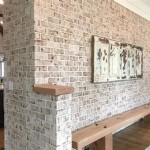How To Repair Car Interior Door Trim Molding Kit in Singapore
Singapore's humid climate and intense sun exposure can significantly impact the condition of car interior door trim molding kits. Over time, these components can become brittle, faded, cracked, or even detach completely. Repairing or replacing them is crucial for maintaining the aesthetics and value of a vehicle. This article provides a detailed guide on how to repair car interior door trim molding kits in Singapore, focusing on practical steps and considerations specific to the local environment.
The first step in any repair process is to accurately diagnose the problem. Carefully inspect the door trim molding to identify the extent of the damage. Look for cracks, discoloration, loose sections, or complete detachment. Determining the severity of the damage will influence the repair method chosen and the materials required. Minor scratches or fading might be addressed with simple cleaning and refinishing techniques, while more significant damage may necessitate partial or full replacement of the damaged sections.
Preparation is key to a successful repair. Before starting any work, gather the necessary tools and materials. This may include a plastic trim removal tool, a cleaning solution suitable for automotive interiors, sandpaper (various grits), a filler or adhesive specifically designed for plastics or vinyl, a color-matched paint or dye, and a clear coat protectant. Having all the required supplies readily available will streamline the repair process and minimize the risk of further damage.
Safety precautions should always be a priority when working on any automotive project. Wear appropriate protective gear, such as gloves and safety glasses, to prevent injury from chemicals or debris. Work in a well-ventilated area to avoid inhaling fumes from cleaning solutions, adhesives, or paints. Disconnect the car battery if the repair involves electrical components located near the door trim molding.
Cleaning and Preparation
Before performing any repair, thoroughly clean the affected area. Remove any dirt, dust, or debris using a mild cleaning solution and a soft cloth. Avoid abrasive cleaners that could further damage the trim. For stubborn stains or grime, consider using a specialized automotive interior cleaner designed for vinyl or plastic.
Once the trim is clean, carefully assess the surface for any imperfections. Small scratches can often be removed with fine-grit sandpaper. Start with a higher grit (e.g., 400 grit) and gradually move to finer grits (e.g., 600, 800, or even 1000 grit) to achieve a smooth, even surface. Wet sanding can help to minimize scratches and produce a more professional finish. Be careful not to sand too aggressively, as this could remove the texture or damage the underlying material.
If the trim is cracked or broken, a plastic or vinyl filler may be required. Clean the damaged area thoroughly and apply the filler according to the manufacturer's instructions. Allow the filler to dry completely before sanding it smooth. Multiple applications may be necessary to fill deeper cracks or holes. Ensure the filler is compatible with the existing trim material to ensure proper adhesion and prevent future issues.
After sanding, wipe down the area with a tack cloth to remove any remaining dust particles. This will ensure a clean surface for applying paint or dye. Mask off any surrounding areas that you do not want to be painted or dyed. Use painter's tape and masking paper to protect the adjacent surfaces from overspray.
Color Matching and Painting
Achieving a perfect color match is crucial for a seamless repair. If possible, obtain the original paint code for your vehicle's interior trim. This information can usually be found in the owner's manual or on a sticker located somewhere on the car's body. Alternatively, you can take a sample of the trim to an automotive paint supplier who can use a color scanner to match the paint accurately. Singapore has numerous automotive supply shops that offer this service.
Before applying the paint or dye to the trim, test it in an inconspicuous area to ensure the color match is accurate. Allow the test area to dry completely and compare it to the surrounding trim. If the color is not a perfect match, adjust the tint accordingly. It’s better to apply multiple thin coats than one thick coat, which can lead to runs or drips.
Apply the paint or dye in thin, even coats using a spray gun or aerosol can. Hold the nozzle approximately 8-10 inches away from the surface and move it in a smooth, consistent motion. Allow each coat to dry completely before applying the next. Multiple thin coats will provide better coverage and a more durable finish. Be sure to follow the manufacturer's instructions regarding drying times and application techniques.
Once the paint or dye has dried completely, apply a clear coat protectant to seal the surface and protect it from UV damage and wear. Choose a clear coat that is specifically designed for automotive interiors and compatible with the paint or dye used. Apply the clear coat in thin, even coats, following the same techniques used for the paint or dye. Allow the clear coat to dry completely before handling the trim.
Reassembly and Final Touches
After the paint or dye and clear coat have dried completely, carefully remove the masking tape and paper. Inspect the repaired area for any imperfections or blemishes. If necessary, use a fine-grit polishing compound to buff out any imperfections and achieve a smooth, glossy finish.
Reinstall the repaired trim molding using plastic trim removal tools to avoid damaging the surrounding surfaces. Ensure that all clips and fasteners are properly engaged to secure the trim in place. If any clips or fasteners are damaged or missing, replace them with new ones. These can be purchased from automotive supply stores or online retailers. Ensure the clips are the correct size and type for your vehicle.
For trim pieces that were completely detached, you may need to use an automotive adhesive to reattach them. Clean both the trim piece and the mounting surface thoroughly before applying the adhesive. Apply a thin, even layer of adhesive to both surfaces and allow it to become tacky before pressing them together. Use clamps or tape to hold the trim in place while the adhesive cures. Follow the manufacturer's instructions regarding curing times and application techniques.
Once the trim is securely reattached, perform a final inspection to ensure that everything is properly aligned and secured. Clean the entire interior of the car to remove any dust or debris that may have accumulated during the repair process. Use a vacuum cleaner to remove loose particles and a damp cloth to wipe down the surfaces. Apply a protectant to the interior surfaces to help protect them from UV damage and maintain their appearance.
In Singapore's climate, UV protection is particularly important. Consider applying a UV protectant spray specifically designed for automotive interiors regularly. This will help to prevent fading and cracking of the trim over time. Parking in shaded areas whenever possible can also help to reduce the exposure of the interior trim to direct sunlight.
Maintaining the interior of your car, including the door trim molding kit, is an ongoing process. Regular cleaning and maintenance can help to prevent damage and extend the life of these components. By following these tips and techniques, you can keep your car's interior looking its best for years to come. Regular inspection can catch minor damages before they become major problems.
Choosing Professional Services in Singapore
While DIY repairs can be cost-effective, sometimes the damage is too extensive or the desired finish too complex for a home repair. Singapore offers a variety of professional car interior repair services specializing in door trim molding kits. When considering professional help, research different workshops and compare their services, pricing, and customer reviews.
Inquire about the materials used and the repair techniques employed. A reputable workshop will use high-quality materials specifically designed for automotive interiors and employ skilled technicians with experience in color matching and trim repair. Ask for before-and-after photos of previous repairs to assess the quality of their work.
Obtain a detailed quote outlining the scope of work, the materials to be used, and the estimated cost. Be sure to clarify any warranties or guarantees offered on the repair work. A written estimate protects both the customer and the service provider and ensures a clear understanding of the agreed-upon terms.

Carbon Fiber Black Car Interior Door Gap Line Insert Molding Trim Decor Strip 5m

How To Repair Broken Plastic Car Parts
4pcs 1set Car Bike Interior Door Trim Panel Clip Dashboard Audio Cover Opener Removal Kits Tools Repair Hand Cockpit Ee Singapore
Carbon Fiber Look Door Molding Strip Cover Trim For Bmw 3 Series F30 F31 12 2024
4x Red Interior Door Molding Strip Decor Trim For Bmw 3 Series F30 F31 2024

Set Carbon Fiber Style Interior Door Molding Trim For Honda Civic 10th Gen Sedan

14x Interior Dash Gear Decor Cover Trim Molding Kit For Jeep Grand Cherokee 11

Abbasali Premium Auto Trim Removal Tool Kit 5 Piece Pry Bar Set Fastener Remover Repair Tools Molding Interior Door Dash Panel Buy Best In Oman Mu Salalah

Bmw E36 Coupe Cabrio M3 Door Card Brackets Repair Kit Mounts Plastic Panel

Tesla Model S X Interior Trim The Ev
Related Posts








